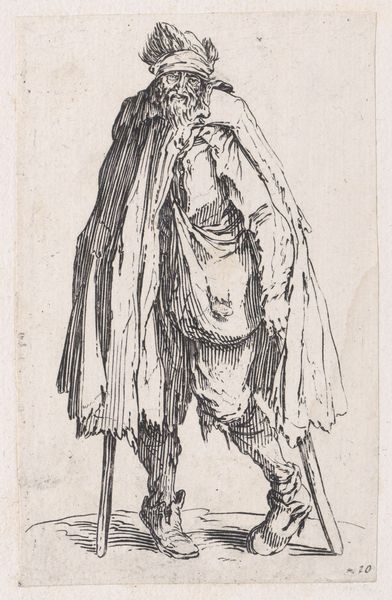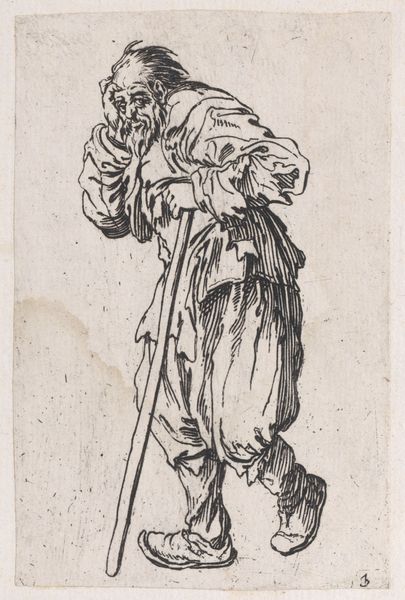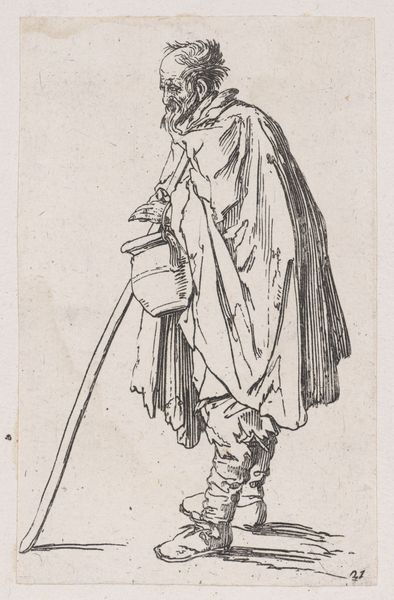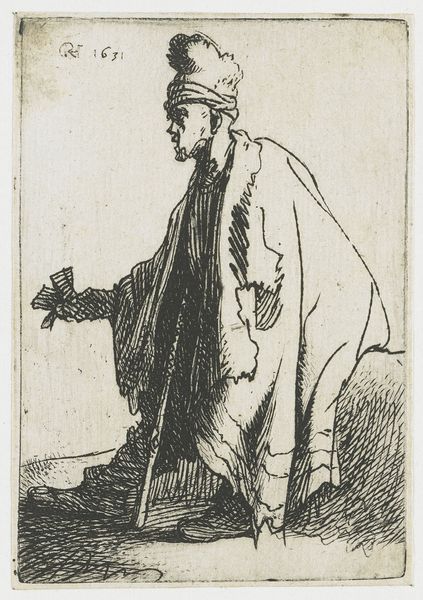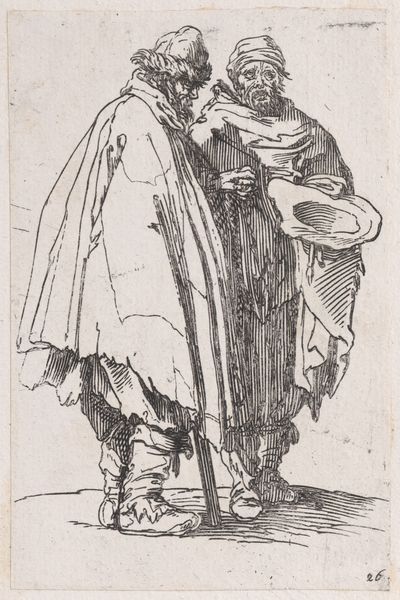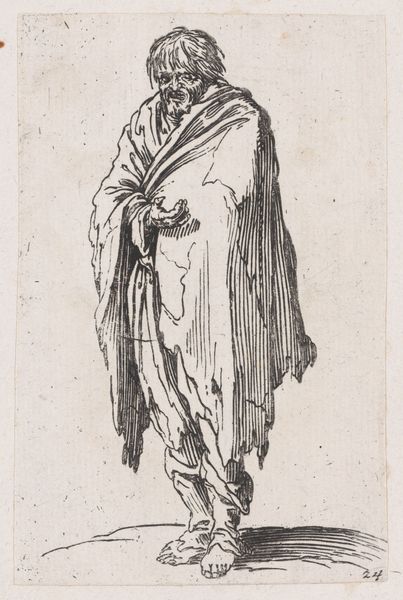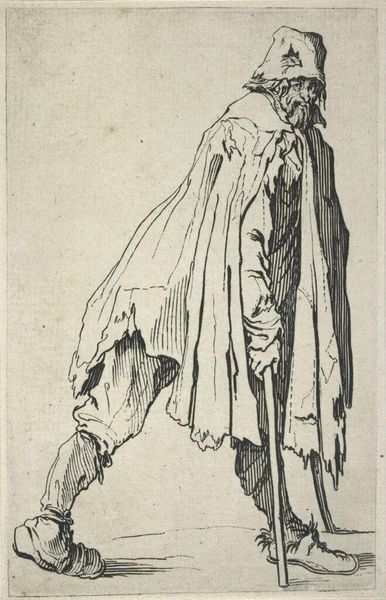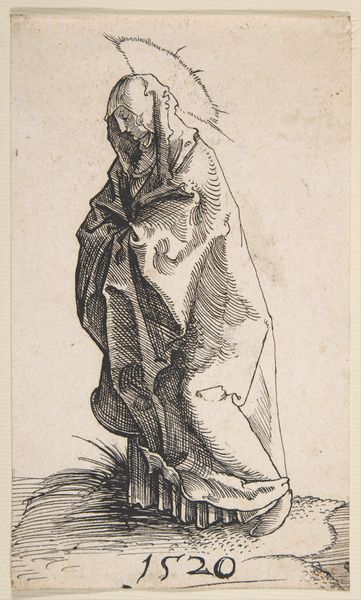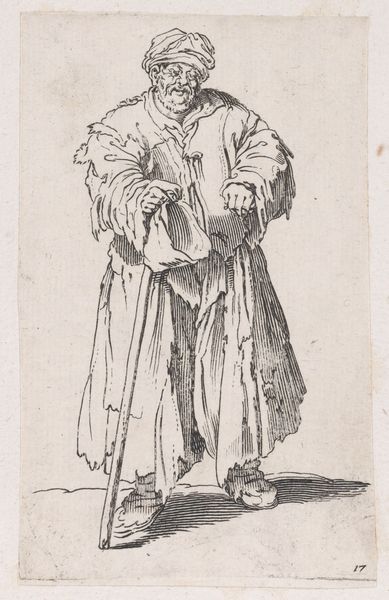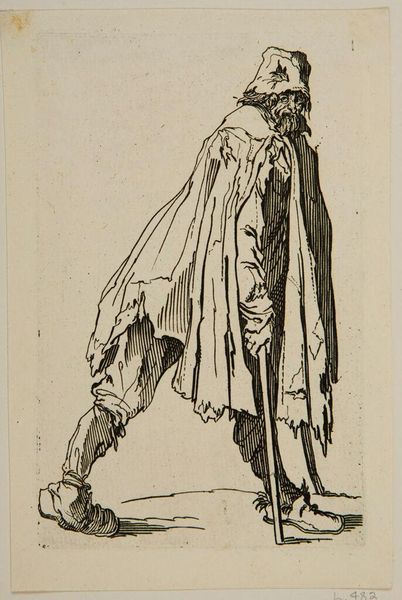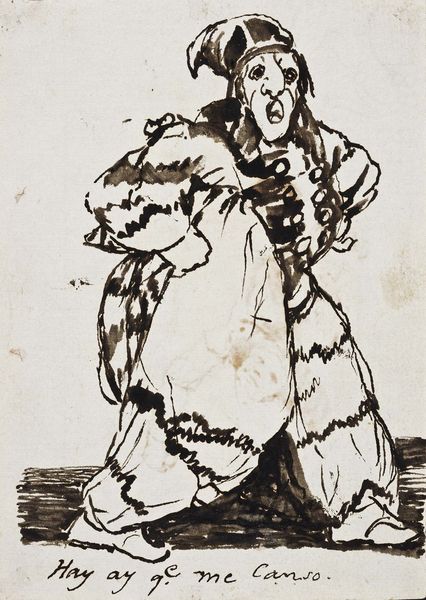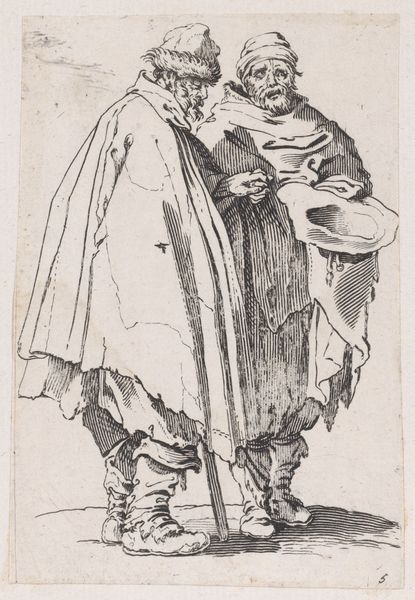
Reverse Copy of Le Mendiant aux Béquilles Coiffée d'un Chapeau et Vu de Dos (The Beggar with Crutches Wearing a Hat and Viewed from Behind), from Les Gueux suite appelée aussi Les Mendiants, Les Baroni, ou Les Barons (The Beggars, also called the Barons) 1625 - 1700
0:00
0:00
drawing, print
#
portrait
#
drawing
#
narrative-art
#
baroque
# print
#
caricature
#
figuration
#
genre-painting
Dimensions: Sheet: 5 7/16 x 3 7/16 in. (13.8 x 8.7 cm) trimmed and backed
Copyright: Public Domain
This small, anonymous print at the Met, titled “Reverse Copy of Le Mendiant aux Béquilles Coiffée d'un Chapeau et Vu de Dos,” pulls us into the world of 17th century France. Here, the social hierarchy was stark, and poverty was rampant. The image depicts a beggar, his figure hunched and worn, relying on crutches for support. The lines of the print capture the tattered clothes and the evident hardship etched on his back. What does it mean to view this figure from behind, obscuring the face? Perhaps it speaks to a society that often turned its back on the impoverished. This print belongs to a series known as "The Beggars," a suite that throws light on the lives of those cast aside. The artist makes a statement about the human condition and the societal structures that perpetuate inequality. This image is not just a depiction of poverty; it’s an invitation to reflect on the historical and ongoing disparities within our own communities.
Comments
No comments
Be the first to comment and join the conversation on the ultimate creative platform.
